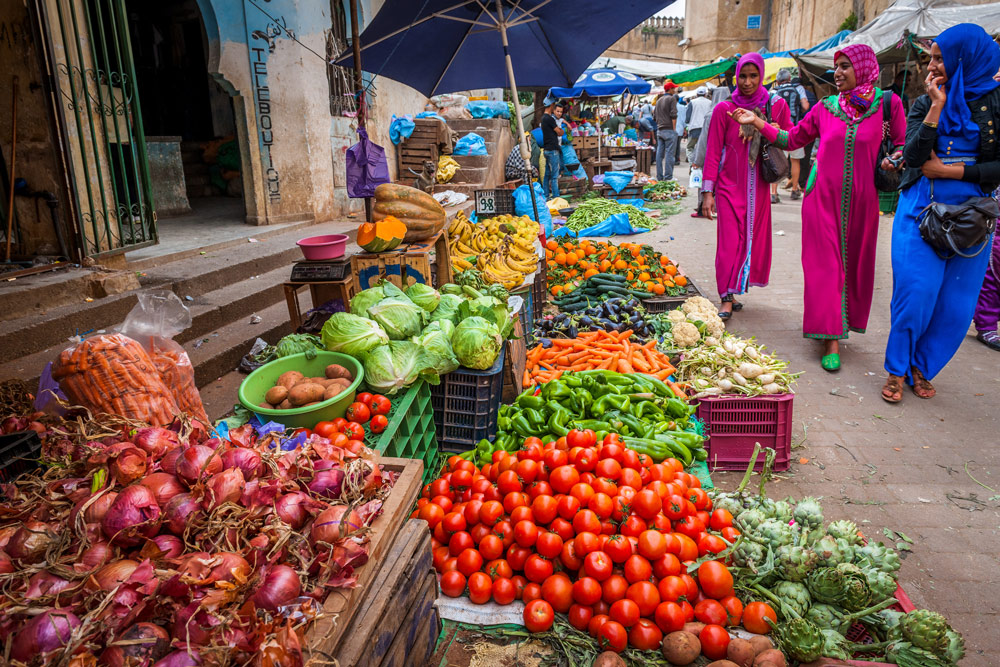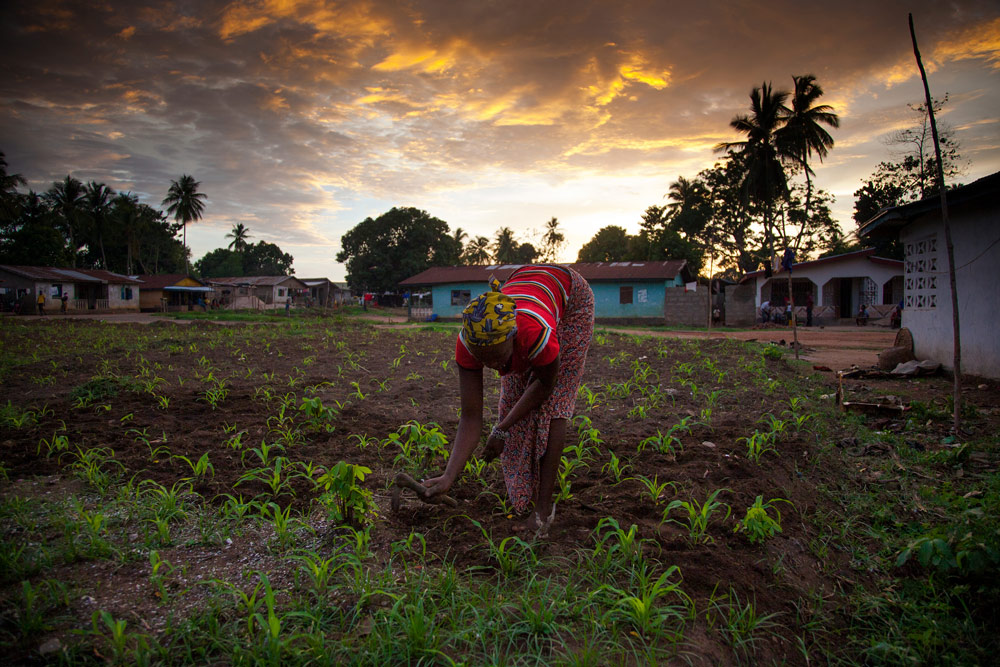We are at a major turning point in history
For the first time ever the world has committed to ending hunger. Not to reduce or halve it—but to end hunger. When world leaders adopted the Sustainable Development Goals (SDGs) in September 2015, they agreed that this should be done by 2030.
IISD has a rich body of work on strategies to enhance food security and to advance sustainable agriculture. It includes an ambitious project to calculate what donors should be spending to end global hunger and how best to direct these funds.
READ MORE![[arrow]](/site/themes/sdg/img/svg/custom/chev.svg)

How much would it cost to end hunger?
IISD joined forces with the International Food Policy Research Institute (IFPRI) to estimate what it would cost to end hunger, and the contribution that donors need to make.
How do we achieve this?
We estimated what it would cost to ensure that at least 95 percent of the population gets enough calories in a day. We focus on donor-relevant interventions which target food consumption or production and will deliver the bulk of the pay-off by 2030.
Social Safety Nets
Support to consumers through cash transfers and food stamps.
Farm Support
Helping producers through fertilizer and seed subsidies, capital investments (e.g. tractors), R&D, improved technology, extension services and better organizing.
Rural Development
Infrastructure, education, storage, market access and value chains.
Enabling Policies
Land reform, tax reform, trade and investment policies and institutional reform.
Nutrition
Addressing the global nutrition concerns, including stunting, exclusive breastfeeding, wasting, anemia, low birth weight, and overweight.
Where should the money go?
At least 73 countries are expected to still have more than 5 per cent of their population hungry by 2030 if there is no additional spending. 18 of those countries should have enough domestic resources to address the issue independently from donors (for example, China). Africa will need the greatest level of support, particularly Central Africa and South East Africa, where the situation of hunger is exacerbated by conflict. Some countries, such as the Democratic Republic of Congo, South Sudan and Eritrea, will depend on donor support for more than 90 per cent of their public budgets.
High priority includes countries that will depend on donors for over 50 per cent of their budgets.
- Afghanistan
- Benin
- Burkina Faso
- Burundi
- Central African Republic
- Chad
- Comoros
- Democratic Republic of the Congo
- Ethiopia
- Guinea-Bissau
- Haiti
- Lesotho
- Liberia
- Madagascar
- Malawi
- Mozambique
- Nepal
- Rwanda
- Sierra Leone
- South Sudan
- Sudan
- Togo
- Uganda
- Zimbabwe
Medium priority includes countries that will depend on donors for between 30 to 50 per cent of their budgets.
- Bangladesh
- Cambodia
- Cameroon
- Côte d’Ivoire
- Djibouti
- Eritrea
- Federated States of Micronesia
- Guatemala
- Honduras
- Laos
- Mauritania
- Nicaragua
- Pakistan
- Papua New Guinea
- Senegal
- Swaziland
- Tajikistan
- Tanzania
- Yemen
- Zambia
Low priority includes countries that will depend on donors for less than 30 per cent of their budgets.
- Armenia
- Bolivia
- Cape Verde
- Congo
- El Salvador
- Guyana
- India
- Jamaica
- Nigeria
- Philippines
- Uzbekistan
- Viet Nam
On target includes countries that will need to retain existing levels of donor support but will not need any extra donor support from now until 2030.
Concrete work IISD is doing to end hunger:
IISD is committed to transforming investment in agriculture into a vehicle for strengthening food security and creating decent employment while protecting land rights and responsibly managing natural resources, particularly water.
Our agricultural investment team works directly with officials from developing countries to help them attract the right kind of investment through the development of model contracts, advisory and training services, and research papers which contribute to a broader understanding of the issues.
Our standards team analyzes the booming market for products which comply with voluntary sustainability standards, examines their impacts and explores opportunities for leveraging these market forces.

Learn More:
Policy Brief: Effective Public Investments to Improve Food Security
It is derived from a longer peer-reviewed article entitled: Can interventions in the agricultural sector improve food security? A Systematic Review of Available Evidence.
A key message is that context matters. Where interventions had no or negative impacts on food security, the reason for failure was often the lack of consideration of broader community challenges, gender inequality and wealth inequity – whereas the successful interventions stressed the importance of prior analysis or a baseline assessment. Improved food security is often the result of multiple, well-designed interventions. The focus is less about finding the right intervention, and more about ensuring that interventions are designed and implemented with the particular context in mind. An important research gap exists regarding evidence on the efficiency of interventions relative to their costs.
Read More![[arrow]](/site/themes/sdg/img/svg/custom/chev.svg)
Blog: How Can the G20 Effectively Address Migration?
Addressing poverty, hunger and the current refugee crisis are among the stated priorities for the G20 summit that will convene in Hamburg, Germany on July 7–8, 2017.
Read More![[arrow]](/site/themes/sdg/img/svg/custom/chev.svg)
Blog: Historic New Law Secures Land for Malian Farmers
Farmers in Mali have gained critical new rights to their traditional land—and rural communities have gained much-needed economic stability—as a result of a historic new law.
Read More![[arrow]](/site/themes/sdg/img/svg/custom/chev.svg)
Commentary: What Is the Link Between Hunger and Migration?
In the context of the current refugee crisis—and the rhetoric surrounding international migration—we investigated how international migration is affected by economic growth, hunger and increased agricultural productivity. We found that economic growth was the strongest driver influencing migration.
Read More![[arrow]](/site/themes/sdg/img/svg/custom/chev.svg)